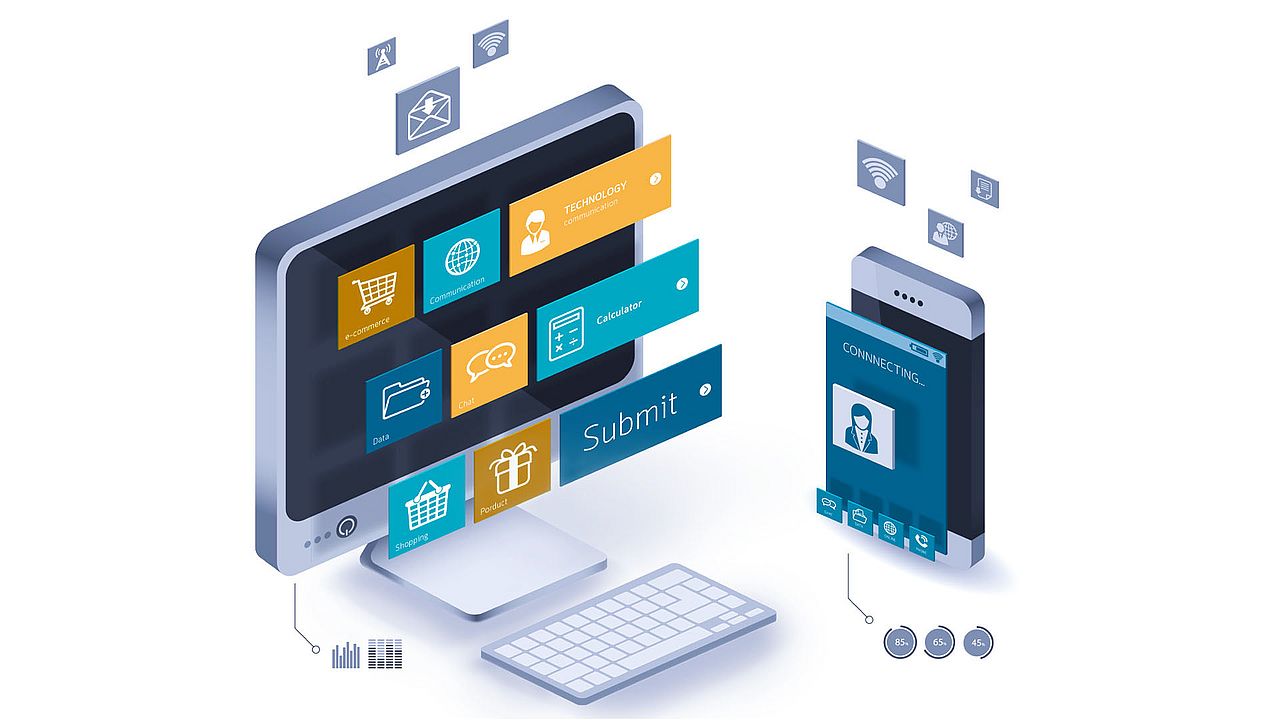
A Comprehensive Guide to Selecting the Ideal E-Commerce CMS for Your Business
Choosing an e-commerce content management system (CMS) is much like selecting the perfect tool for a craftsman; the tool you choose can significantly impact the quality and efficiency of your work. Just like you don't need a sledgehammer for a small nail, you don't need an overly complex enterprise CMS, for example, for a straightforward e-commerce site selling only a few products. In such cases, you may not even need a CMS and could rely on more straightforward, hosted platforms that can meet your needs without the overhead of a complete CMS.
Voltaire aptly said, "The best is the enemy of the good." There is no universally "best" e-commerce CMS because the right choice largely depends on factors unique to your business needs. Each platform offers distinct features that may align differently with various business requirements.
TYPO3 is an open-source, enterprise-level CMS backed by an active community and professional support. TYPO3, while not exclusively made for e-commerce, does have a range of features that make it a strong choice for growing online businesses active in the e-commerce space. Our article aims to help anyone evaluating CMSs for their online businesses — we present an analysis of TYPO3 alongside other leading CMSs to help you make an informed decision.
What Are the Key Types and Architectures of CMSs?
Just as you would choose different tools and materials depending on whether you’re constructing a cottage, a skyscraper, or a houseboat, the same principle applies to selecting a CMS. Different types of CMSs and their architectures cater to diverse business needs, technical requirements, and future growth plans.
"The greatest benefit the CMS can provide is to support your business goals and strategies. For example, the CMS can help to improve sales, increase user satisfaction, or assist in communicating with the public."
— International Journal of Computer Applications, 2012
The vast landscape of CMSs and architectures exists because no two businesses are alike. Some need robust, flexible systems to handle complex, multifaceted content strategies, while others might need straightforward, easy-to-use platforms to launch and maintain their online presence quickly. Understanding the various types and architectures of CMSs is crucial to selecting the right one for your needs.
Types of CMSs
CMS Type | Description | Examples | Key Features | Best Suited For | Example Companies |
Open Source CMS | Built on open source software, supported by large developer communities. | TYPO3, Drupal, WordPress, Joomla | Flexibility, continuous updates, extensive community support, scalable, customizable | NASA, VBB, Harvard University | |
Proprietary CMS | Built with proprietary software, users can't control or see the codebase. | Sitecore, Adobe Experience Manager (AEM) | Controlled by vendor, robust features, integrated with other software, high customization at a cost | Large businesses with specific needs and a clear digital roadmap | Microsoft, Coca-Cola, Toyota |
SaaS CMS | Cloud-based service, hosting all content management functionality and integrating with other services. | Optimizely, Wix, Squarespace | Easy to set up, subscription model, ongoing support, minimal technical overhead, scalable | Small to mid-sized businesses and individuals needing quick setup and minimal technical management | Airbnb, Lyft, Casper |
CMS Architectures
Traditional CMS architecture tightly coupled the backend (content creation and management) with the front end (content delivery). This model worked well for straightforward websites but struggled to keep pace with the demands of omnichannel content delivery and dynamic user experiences.
The need for more adaptable solutions became evident with the rise of mobile technology, social media, and the Internet of Things (IoT). This led to the development of headless and hybrid CMS architectures, which decouple the backend from the front end. By focusing on API-driven content delivery, which is a fancy way of delivering content through programmable interfaces, headless CMSs allow businesses to push content to any device or platform, offering unparalleled flexibility.
Here’s a summary of the different types of architecture and their use cases.
Architecture | Description | Use Cases | Best Suited For | Example Companies |
Traditional CMS | The backend and front end are tightly integrated. | Simple content management, direct website publishing | Businesses with simpler content management needs | Local boutiques, small restaurants, personal blogs, small businesses, singular brand companies |
Headless CMS | It provides content to multiple channels and devices through APIs but lacks a front-end presentation layer. | Omnichannel content delivery, flexible front-end development | Organizations needing content delivery across multiple digital platforms | IKEA, Spotify, The Guardian |
Hybrid CMS | Combines traditional and headless CMS capabilities, offering flexibility in content delivery. | Flexible content delivery, adapting to new media | Enterprises looking for a future-proof CMS that supports both traditional and headless capabilities | Unilever, Vodafone, Bayer |
Market research and product validation
Before choosing a CMS, we encourage you to conduct comprehensive market research to grasp your target audience and validate your product ideas. You can select a CMS that aligns with your business requirements by identifying your niche, studying your competitors, and assessing market demand.
Business model and scalability
Determine your business model—dropshipping, wholesale, or direct-to-consumer—and assess how scalable your CMS needs to be. Different models have varying requirements for inventory management, shipping integrations, and customer service capabilities.
Supplier and inventory management
Choose a CMS that integrates seamlessly with your suppliers and inventory management system. Look for features that support efficient inventory tracking, order fulfillment, and supply chain management.
Legal and administrative considerations
Ensure your CMS supports compliance with legal and administrative requirements, such as tax calculations, privacy regulations, and security standards. This will help you avoid legal issues and build customer trust.
Branding and marketing capabilities
Select a CMS that offers robust branding and marketing tools. From customizable templates to SEO features and social media integrations, your CMS should help you create a strong online presence and attract your target audience.
User experience and design flexibility
A user-friendly interface and design flexibility are essential for creating an engaging online store. Look for a CMS that offers responsive design options and a robut set of frontend features, allowing you to customize your site's look and feel.
Technical support and community
Reliable technical support and a strong community can significantly impact your CMS experience. Choose a platform with extensive documentation, active user forums, and responsive customer support to help you troubleshoot issues and optimize your site.
Cost and budgeting
Evaluate the cost of the CMS, including subscription fees, transaction fees, and any additional costs for plugins or themes. Ensure the platform fits your budget while providing your business with the necessary features and scalability.
Too often, founders and business owners find themselves forced to change their CMS to accommodate growth or evolving needs, which can be costly and disruptive. By researching, you can choose a CMS that meets your current needs and supports your long-term growth.
Key Technology Factors That Influence Your E-Commerce CMS Choice
When choosing an e-commerce CMS, you must consider your unique business needs, including how you want to manage your online store and interact with customers. Robust product management, inventory tracking, shopping cart functionality, and secure payment gateways are the basic features in any e-commerce CMS. Beyond that, here’s a list of other technology needs to consider:
- Scalability and flexibility:
- Your CMS should be able to grow with your business. It should handle increased traffic and more products and allow for customization as your business evolves. Growth means more territories, regions, and visibility — ensure your CMS supports multisite and multilingual functionalities.
- User-friendliness and ease of use:
- Look for an intuitive interface that enables easy updates and management of your e-commerce site without extensive technical knowledge.
- Security:
- The CMS must adhere to high-security standards, including SSL encryption, secure login protocols, and regular security updates. To protect customer data, it should also support secure payment gateways.
- Mobile responsiveness and performance:
- With significant traffic coming from mobile devices, your CMS should ensure fast loading times and offer responsive design to enhance user experience.
- SEO friendliness:
- Built-in SEO capabilities, such as customizable metadata and URL structures, are important for improving your search engine rankings and driving organic traffic to your site.
- Cost and budget considerations:
- Evaluate the total cost of ownership, including licensing fees, hosting costs, and any additional features or plugins. Balance these costs against the expected return on investment.
- Customer service and support:
- Reliable customer support is vital for resolving issues quickly. Look for CMS providers that offer comprehensive support services.
Four Key Insights to Guide Your E-commerce CMS Selection and Decision-Making:
- Open-source solutions like TYPO3, Drupal Commerce, and Magento offer unparalleled flexibility and customization options, which are ideal for businesses with complex needs and technical resources.
- SaaS platforms like Shopify and BigCommerce provide user-friendly interfaces and robust out-of-the-box features, perfect for small to medium-sized businesses seeking quick setup and minimal technical management.
- Enterprise-level solutions like Salesforce Commerce Cloud offer advanced capabilities in personalization, omnichannel strategies, and AI-driven insights, suitable for large-scale operations with sophisticated requirements and big budgets.
- Scalability, security, integration capabilities, and user experience should be carefully weighed against your business model, target market, and growth projections.
Remember, the e-commerce landscape is dynamic, and your CMS needs may evolve. Choose a platform that meets your current requirements and offers the flexibility to adapt to future challenges and opportunities. Whether you're a startup looking for a simple, cost-effective solution or an established enterprise requiring advanced features and integrations, there's an e-commerce CMS tailored to your needs.
Ultimately, your CMS will be a powerful tool in your e-commerce toolbox, enabling you to create engaging shopping experiences, streamline operations, and drive sustainable growth in the competitive digital marketplace. By carefully considering the features, architectures, and business factors we've discussed, you'll be well-equipped to make an informed decision that positions your e-commerce venture for long-term success.
Learn more about TYPO3 for e-commerce
Are you ready to scale your online business using TYPO3 CMS for e-commerce?




